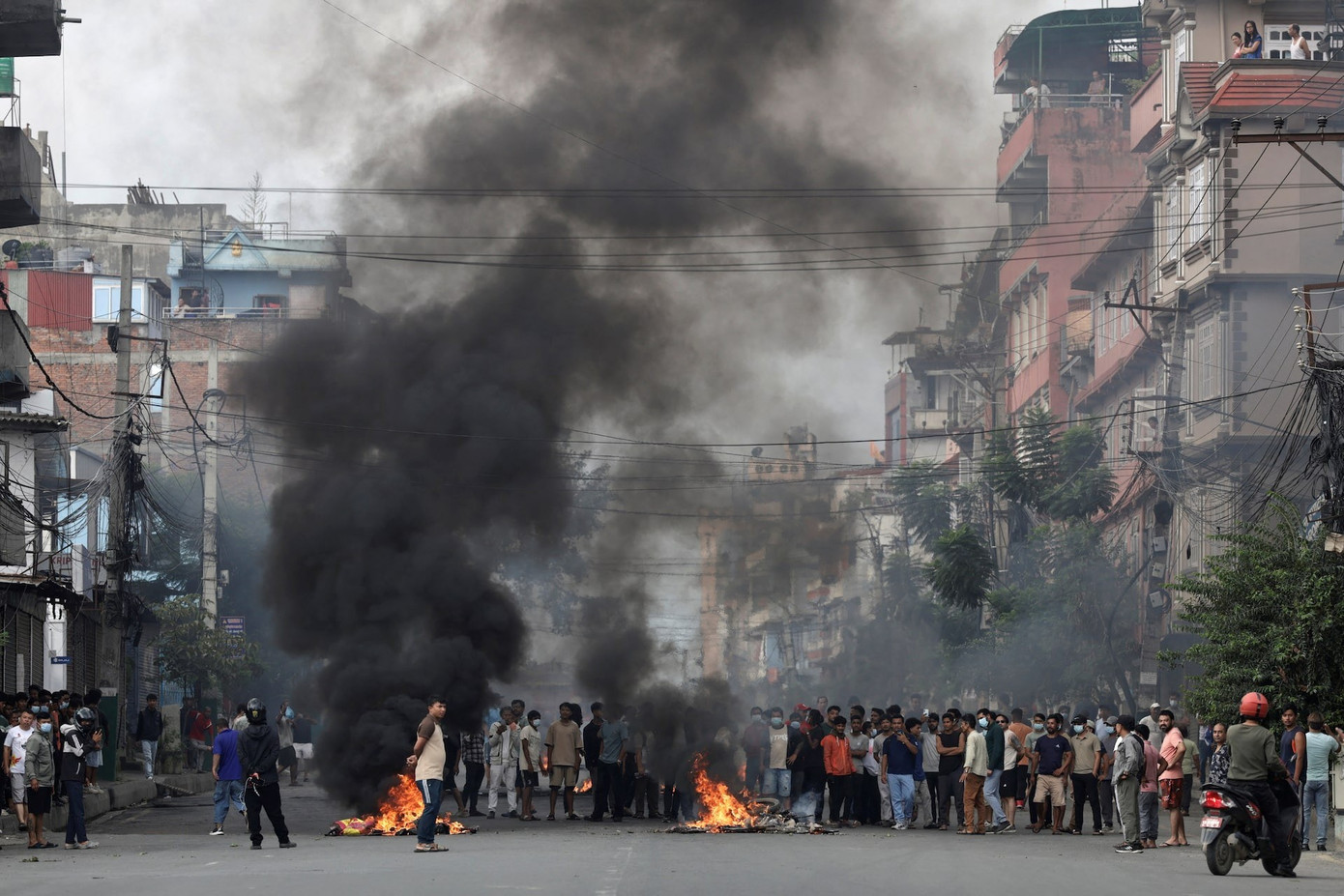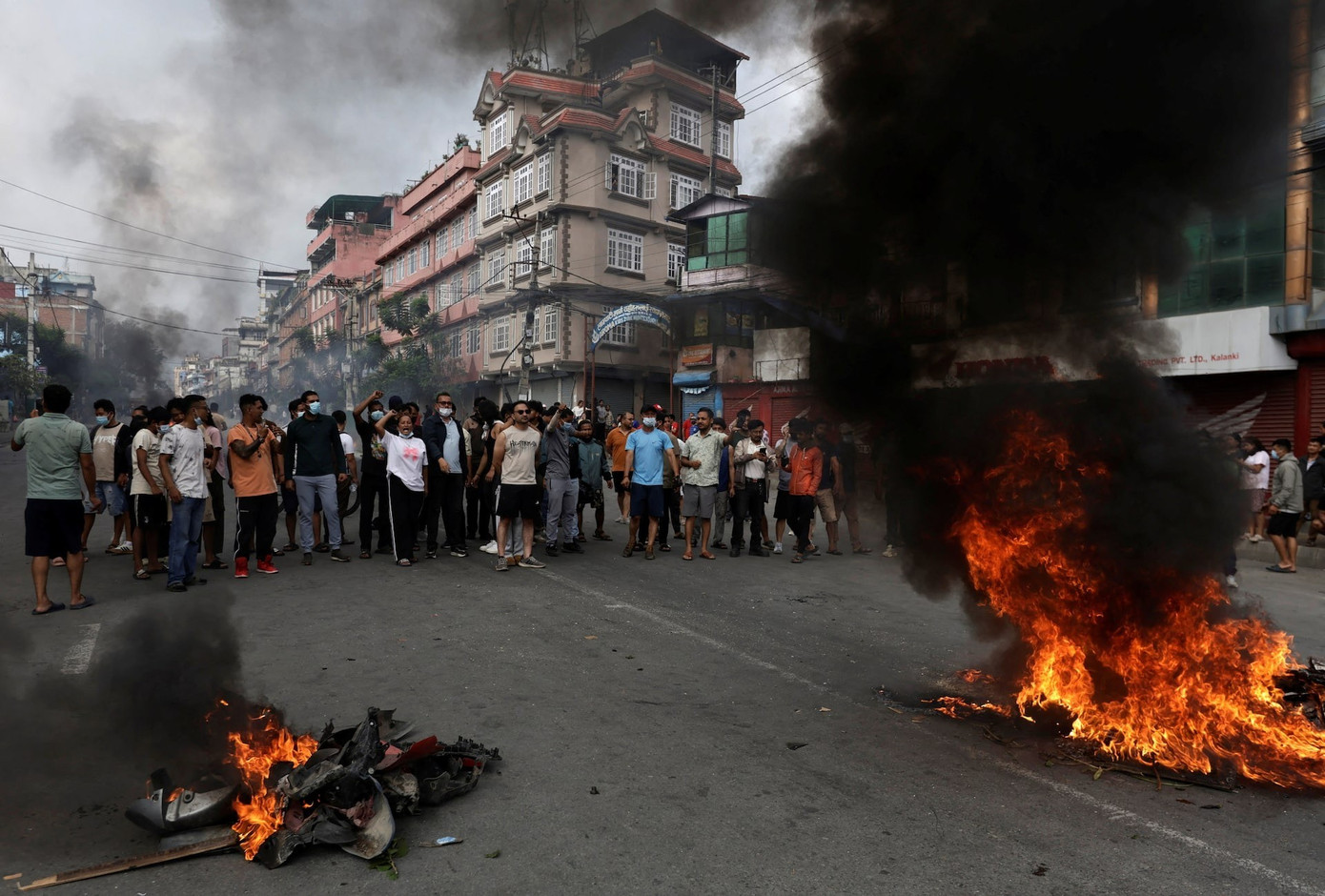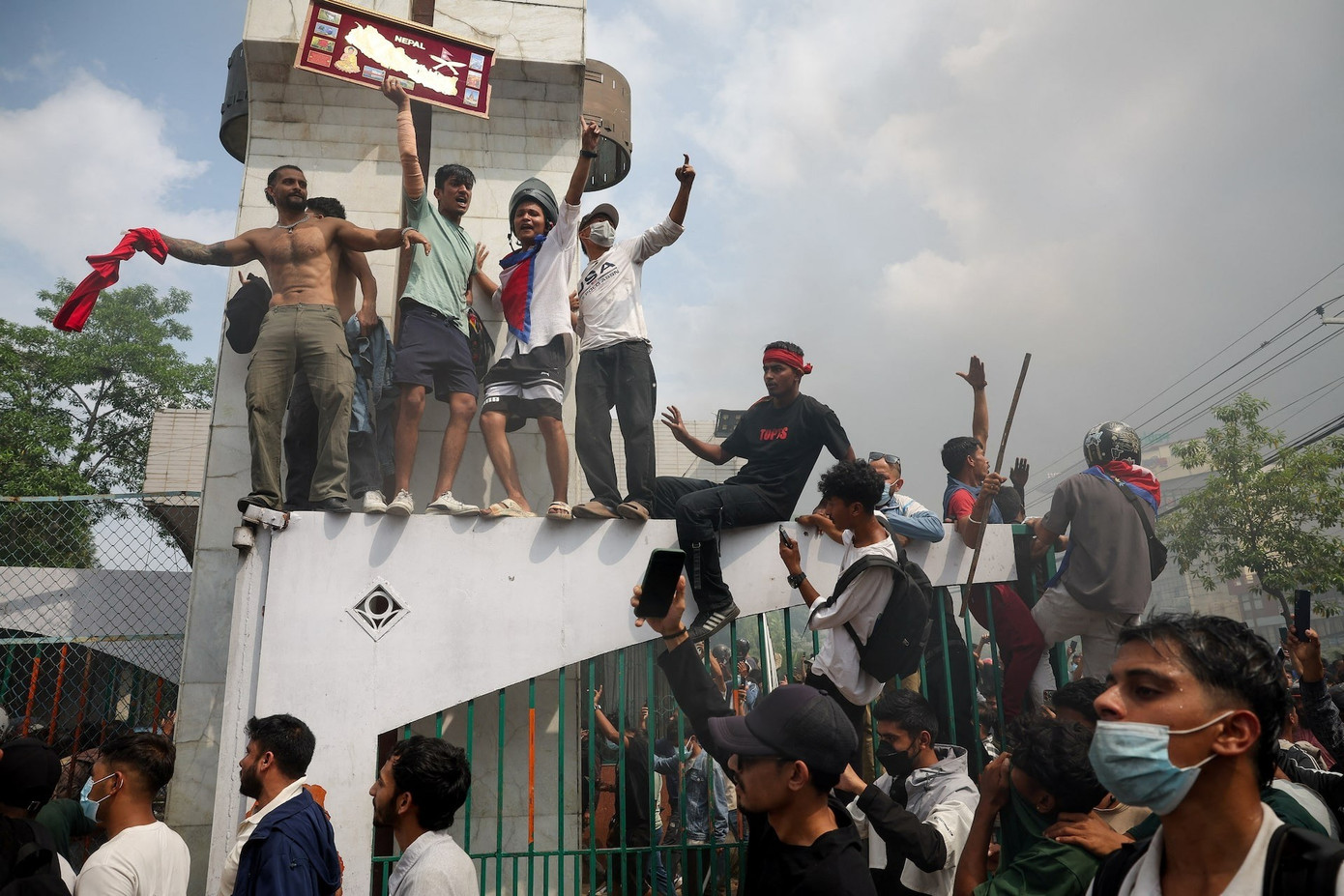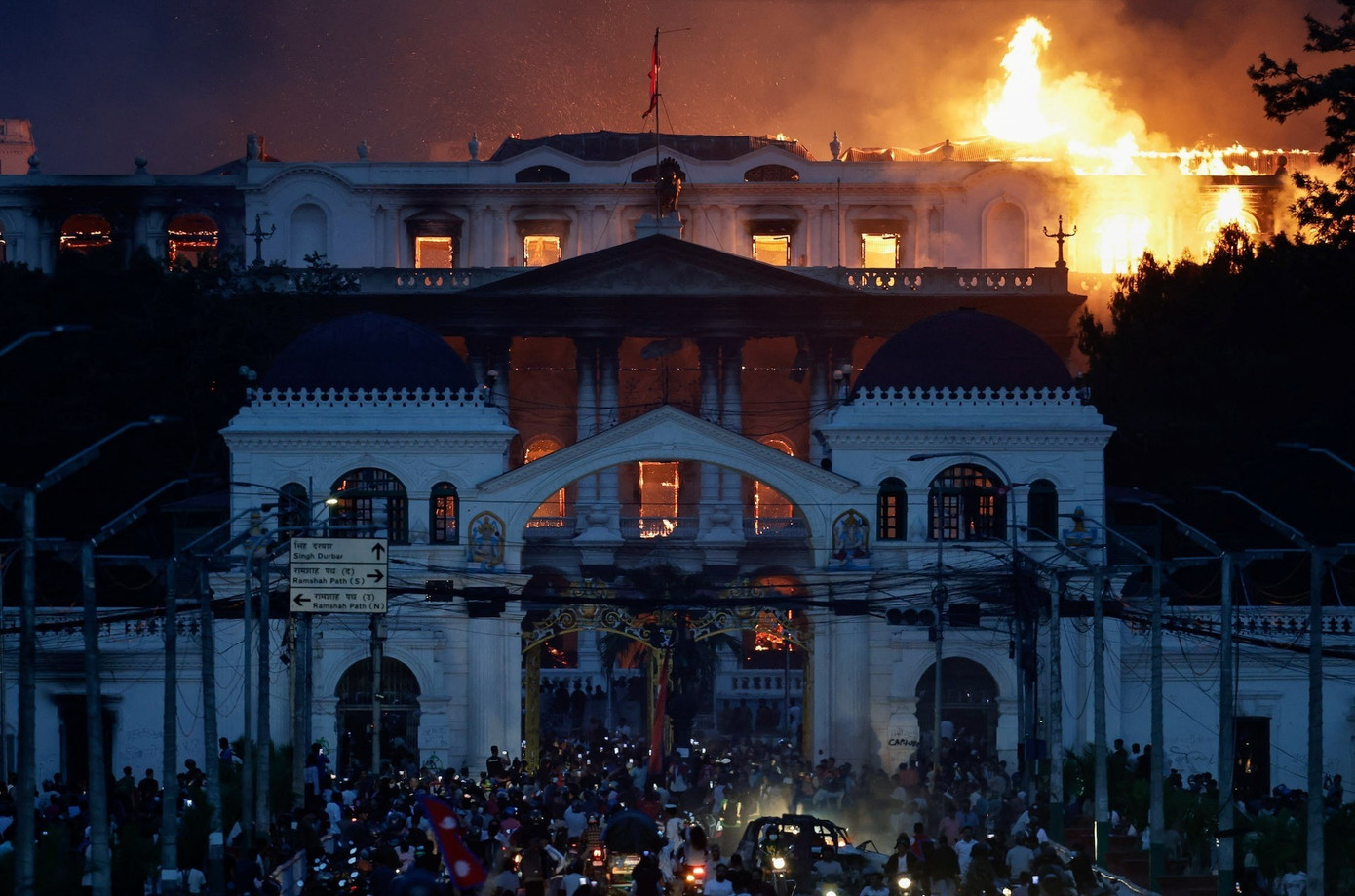Viral videos show Singha Durbar Palace engulfed in flames. The building, constructed in 1908, serves as the seat of the Nepalese government, housing the offices of several ministries and other key agencies.

Earlier, protests—mainly led by young people—erupted on September 8 after the government announced a ban on major social media platforms, including Facebook, YouTube, and X.
Although the ban was lifted, the demonstrations turned violent, with dozens confirmed dead in Kathmandu and around 500 injured, including more than 100 police officers. On September 9, protesters reportedly broke through the western gate of Singha Durbar Palace, stormed restricted areas, and set fires.

According to some media reports, witnesses described fierce clashes with security forces as the crowd advanced inside.
Protesters set tires on fire on several streets, hurled stones at riot police, and chased them through narrow alleys.
They also burned the homes of some politicians in Kathmandu. Local media reported that several ministers were evacuated to safety by military helicopters.
Videos circulating on social media show former Prime Minister Sher Bahadur Deuba and his wife Arzu Rana, as well as Finance Minister Bishnu Paudel, being attacked by protesters.
Other videos shared online show the Nepal Parliament building on fire, with charred walls and thick smoke billowing into the air.

Kathmandu’s airport, Nepal’s main international gateway, was closed due to smoke from the fires. The wave of protests forced Nepalese Prime Minister K.P. Sharma Oli to resign, and his private residence was also set ablaze.
The protests have pushed Nepal into its worst crisis in decades. Nepal—situated between India and China—has struggled with political and economic instability since protests led to the abolition of the monarchy in 2008.
Organizers have referred to these demonstrations as “Gen Z protests,” fueled by youth frustration over unemployment. In recent years, millions have worked abroad in the Middle East, South Korea, and Malaysia, mostly in construction, to send remittances home.

“In light of the country’s adverse situation, I resign to facilitate a resolution in accordance with the constitution,” Oli wrote in his resignation letter to President Ramchandra Paudel.
An aide to Paudel told Reuters that the president had begun the process of finding a new prime minister while summoning protest leaders for negotiations.
In a video statement, military chief Ashok Raj Sigdel urged protesters to end the unrest, avoid further loss of life and property, and come to the negotiating table. In a separate statement, the army pledged to protect the lives and property of the people.
The United States has called on all parties to exercise restraint. A State Department spokesperson said the U.S. remains a “steadfast partner of Nepal, committed to working for our shared interests in stability, prosperity, and democracy.
Leave a Reply